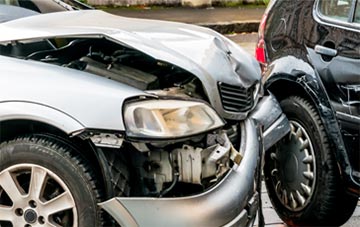Braking Distance: Safety Tips

Any time you drive behind another vehicle, the motorist ahead will spot upcoming hazards before you do. Maintaining a safe following distance is crucial to prevent a rear-end collision if the other driver needs to stop suddenly. Florida recommends that all drivers keep at least two seconds of space between vehicles and more time in bad weather or poor road conditions. Understanding braking distances can help you recognize what you must do to keep all road users safe.
New Technologies for “Automatic Braking”
Many vehicles now come equipped with automatic emergency braking (AEB) systems. This technology uses a network of sensors to detect when a crash may be imminent and automatically applies the vehicle’s brakes if the driver has not yet done so. It can also add more braking force to supplement the pressure the driver has already applied to the brakes, thereby avoiding or significantly reducing the impact of a collision. Studies have found this technology significantly reduces the number of crashes. However, AEB systems are no substitute for a thorough understanding of safe following and braking distances.
What is the Safe Braking Distance?
Many people think of braking distance as the amount of space a vehicle covers between applying the brakes and coming to a complete stop. Research shows the average driver takes between half a second and three-quarters of a second to realize they need to brake in the first place. Add this to another three-quarters of a second it takes to shift their foot from the accelerator to the brake pedal, and a vehicle may not even begin to slow down until one-and-a-half seconds after a driver spots an upcoming hazard.
So, what is braking distance? Once you apply the brake, your stopping distance depends on your speed. For example, the average total stopping distance (reaction distance plus braking distance) on dry pavement is 89 feet at 30 miles per hour. However, the stopping distance formula shows that braking distance has no linear relationship to speed. In fact, it triples to 268 feet when the speed doubles to 60 miles per hour. Poor road and weather conditions can further extend these figures. For example, a vehicle’s stopping distance in rain is greater than in dry conditions.
Five Safety Tips for Braking Distance
These five tips can help you keep a safe following distance on the road:
- Always leave plenty of space – Allow at least two seconds between your vehicle and the one in front of you.
- Slow down – Driving too fast increases your risk of crashes.
- Pay attention – Avoid distractions and keep your eyes on the road.
- Adjust for road conditions – Slow down and allow for a greater following distance during inclement weather.
- Get brakes serviced regularly – Brakes only work when in good condition, and faulty brakes can be deadly.
Injuries Caused by Tailgating Collisions
According to the National Safety Council, rear-end collisions accounted for around 3,600 U.S. traffic deaths and nearly 1.6 million injuries in a recent year. Tailgating crashes can lead to injuries like:
- Whiplash and other neck injuries
- Broken bones
- Muscle and ligament injuries
- Soft-tissue damage
- Back and spinal cord injuries
- Concussion and traumatic brain injury (TBI)
- Internal organ damage
- Amputation
Contact Fine, Farkash & Parlapiano P.A. for a Free Consultation
Even if you always practice safe following distances and timely braking, another party’s negligence can still cause a crash. If you suffered injuries in a traffic collision, the Gainesville personal injury attorneys at Fine, Farkash & Parlapiano, P.A. will fight to recover the money you need to rebuild your life. We have over 100 years of combined experience representing injured people and a proven history of successful results. Contact us today for a free consultation.

Mr. Fine was born in New York, New York, and was raised in the northeast, where he studied sociology at Colby College in Waterville, Maine. He then graduated with honors from the University of Florida Levin College of Law in 1976. In law school, he was a member of Phi Kappa Phi Honor Society, was inducted into the Order of the Coif, and graduated in the top 10 percent of his class. Mr. Fine was admitted into the Florida Bar in 1976, the United States District Court for the Middle District of Florida in 1977, the United States District Court for the Northern District of Florida in 1991, and the United States Court of Appeals 11th Circuit in 1982.
